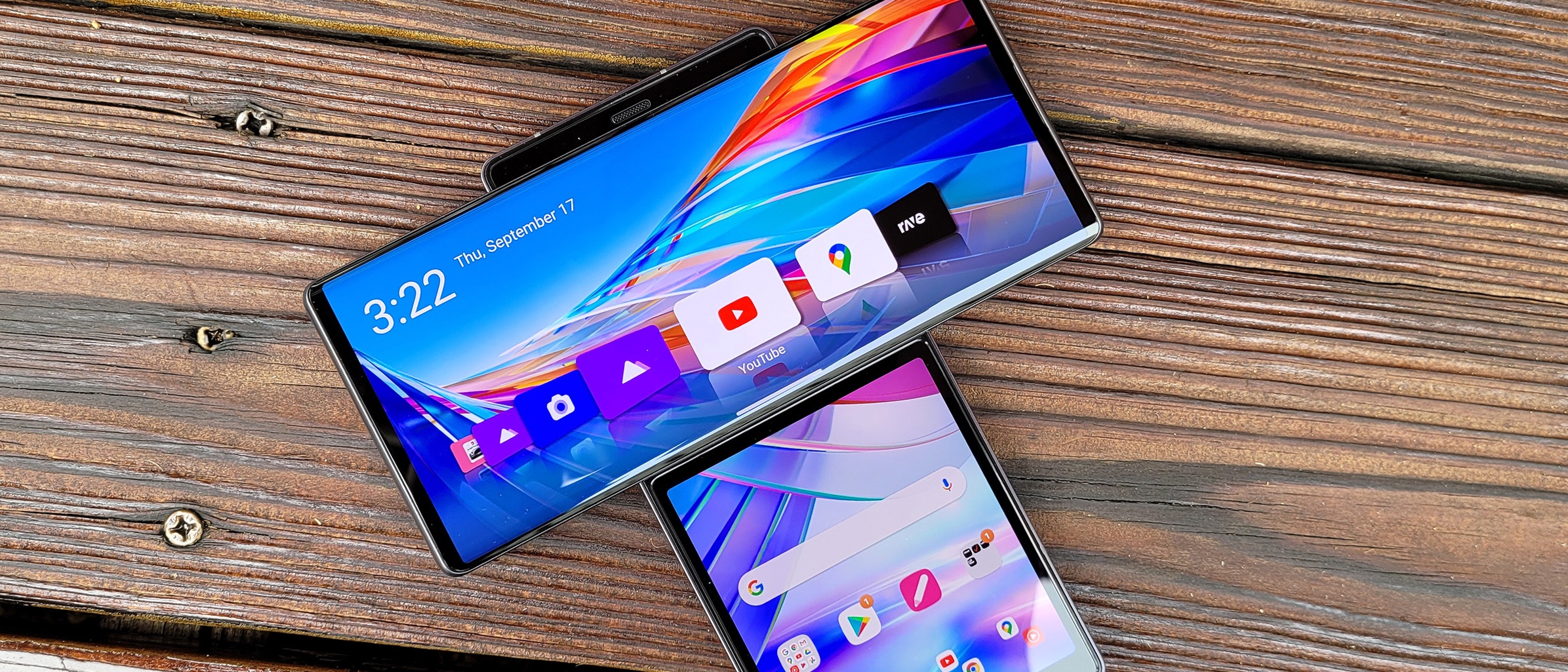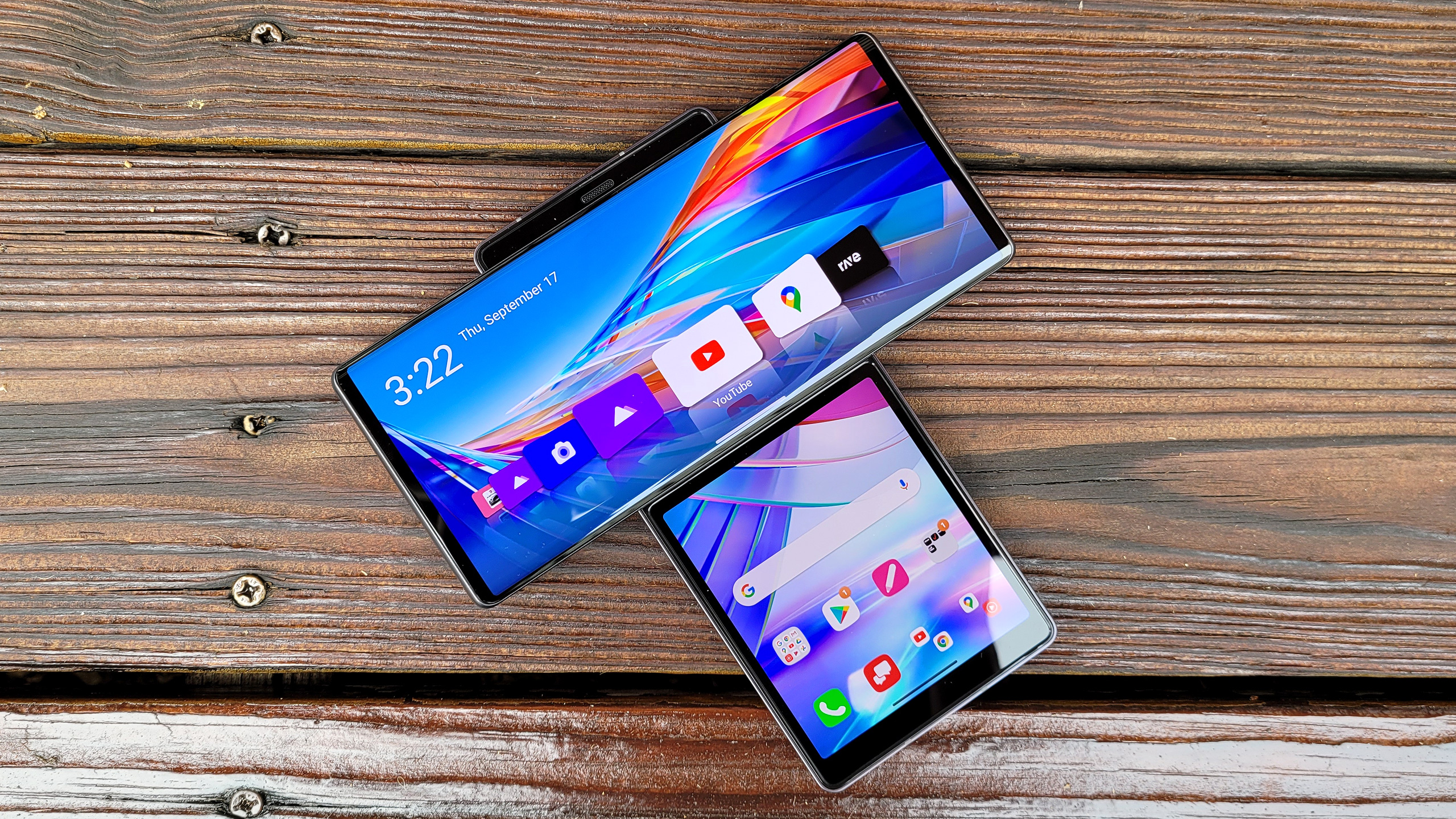Tom's Guide Verdict
The LG Wing reels you in with intuitive software experiences that make use of the unique dual-display approach. Unfortunately, you'll pay a high price for its middling performance, underwhelming battery life and average photo quality.
Pros
- +
Smooth software
- +
Clever dual-screen experiences for apps
- +
Solid swivel mechanism
- +
Gimbal camera is useful
Cons
- -
Very bulky
- -
Changing orientation can present problems
- -
So-so battery life
- -
Poor performance for price
Why you can trust Tom's Guide
Price: $999
OS: Android 10
Displays: 6.8-inch OLED and 3.9-inch secondary OLED
CPU: Snapdragon 765G
RAM: 8GB
Storage: 256GB; expandable up to 2TB
Rear camera: Triple-lens: 64MP wide (ƒ/1.7), 13MP ultrawide (ƒ/1.9), 12MP ultrawide with gimbal (ƒ/2.2)
Front camera: 32MP
Battery: 4,000 mAh
Size (closed): 6.67 x 2.93 x 0.43 inches
Weight: 9.74 ounces
We've already seen some of the most ambitious phones ever in the last year, and yet the LG Wing still manages to stand out.
It's a concept almost too ludicrous to exist. The LG Wing is a dual-screen phone, but you wouldn't know it by looking at it straight away. That's because the second panel is hiding behind the primary one, and is only revealed when the the big one on top is swiveled out of the way.
- Best foldable phones
- LG Velvet vs. Samsung Galaxy S20: How LG's phones compare to flagships
- LG Wing vs Samsung Galaxy Z Fold 2: Which dual-screen phone wins?
It's jarring in pictures, even more jarring in real life, and while a neat party trick, it's not really the most elegant approach to dual-screens we've ever laid eyes on. The T-shaped result ultimately resembles two candy bar handsets glued together.
But what they say about books and their covers also applies to the LG Wing. This phone can deliver some clever and useful software experiences by virtue of its weird design and gimbal-equipped camera. Unfortunately, our LG Wing review finds that the phone's high price and relatively poor performance, photo quality and battery life keep it from ascending to our list of the best phones.
LG Wing: Price and availability
The LG Wing costs $999, and was initially released through Verizon. The device is now available from AT&T and T-Mobile as well.
There's just one configuration of the Wing, with 8GB of RAM and a generous 256GB of storage; you can also expand available space by up to another 2TB with the use of a microSD card.
LG Wing review: Design
At nearly 6.7 inches tall, more than four-tenths of an inch thick and tipping the scales at a smidge under 10 ounces, the LG Wing is a seriously massive phone. Even the super-sized Samsung Galaxy Note 20 Ultra is 2 ounces lighter and a tenth of an inch thinner. Those may sound like negligible numbers, but they make a massive difference in hand.
Get instant access to breaking news, the hottest reviews, great deals and helpful tips.
I won't spend too much time on the Wing's design aside from the dual-screen aspect, but it's a handsome enough device, with an elegant matte aluminum frame and mirrored glass back, touched off with a triple-lens rear camera housing that almost looks lifted wholesale from Samsung's latest Notes.
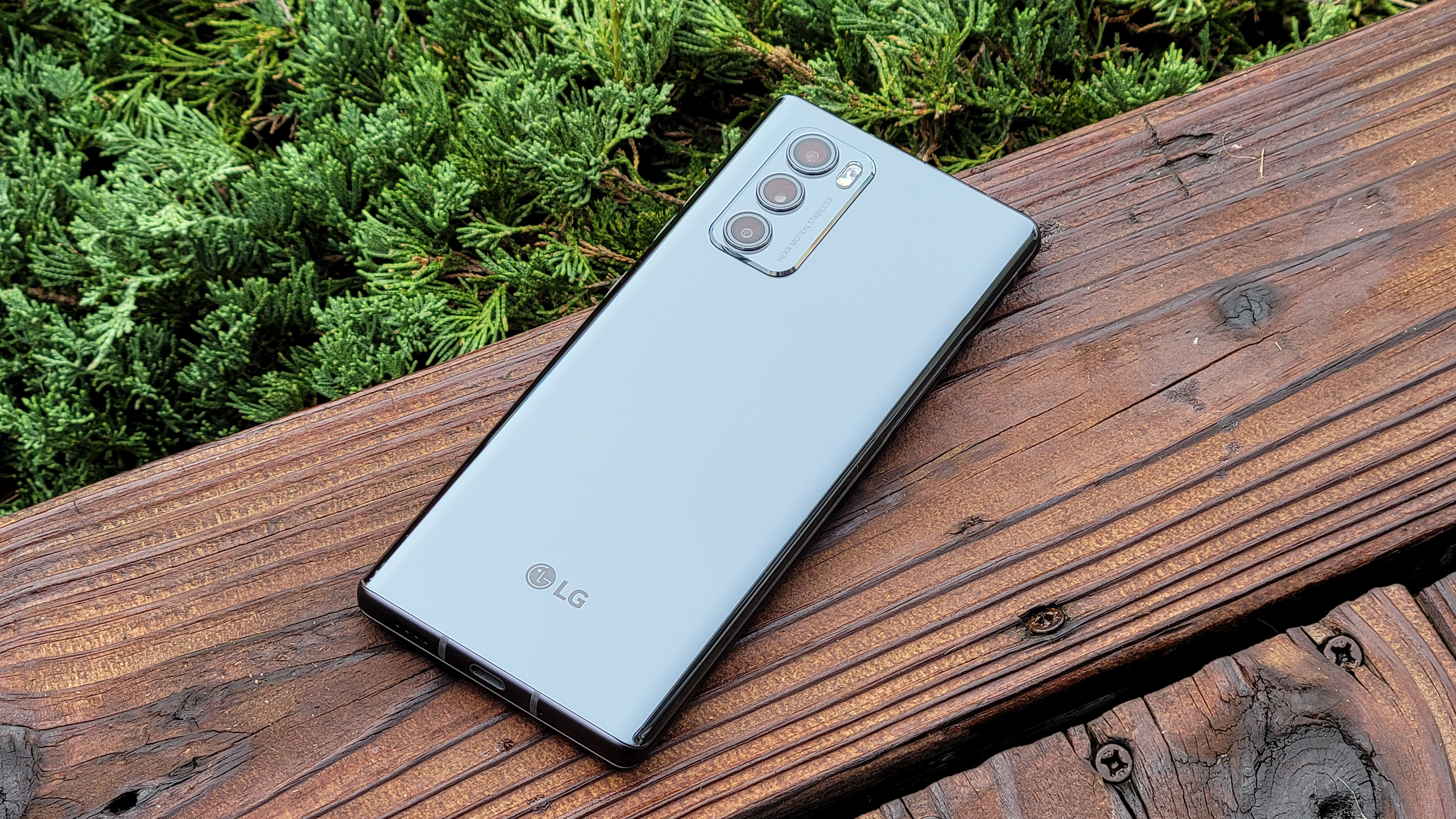
Inevitably, however, you forget about all of that the very first time you flick the Wing's primary 6.8-inch OLED display over to the left, revealing a 3.9-inch panel underneath. The top panel slides away with a light touch in one swift, smooth motion that slows down as it terminates and soft closes, in tandem with a simulated click from the software. Closing the display requires the use of two hands, though opening it can be done with the effortless swipe of a thumb.
LG says the Wing is built to withstand 200,000 swivels, which the company estimates should last you five years. The whole mechanism feels very sturdy; during the pre-production preview phase, I noticed the slightest degree of vertical flexing when I gently try to lift that top display up and down, but LG seems to have stamped that out in the final product and the result is solid.
When you spin that top screen to the side, you're greeted with a dual-screen home interface. On the 6.8-inch panel, you'll find what LG calls Swivel Home, which displays large app shortcuts in a horizontal fashion. On the other screen, you'll find your more conventional Android home screen interface. Interestingly, Android navigation bar gestures are accessible from both panels, as is the app drawer.
Two points worth stipulating: LG is one of the lone phone makers committed to the 3.5-millimeter headphone jack, though you unfortunately won't find one in the Wing — there simply wasn't enough room, which is understandable when you consider LG had no choice but to stash the front-facing selfie camera inside a motorized pop-out mechanism. Additionally, with so many moving parts, the Wing is not certified water resistant in any capacity; slightly disappointing, albeit hardly surprising.
LG Wing review: Dual-screen experience and software

While I've encountered some circumstances where the Wing isn't sure how to orient apps on both displays depending on the gyroscope's position, for the most part, my impressions of the Wing's user experience are positive.
Not only does LG's software react fluidly and quickly when new apps enter the mix or assume the foreground (looking at you, Microsoft Surface Duo), but the company has devised some pretty clever uses for the extra real estate when you're not multitasking.
For example, if you're watching a YouTube video in portrait orientation, and then you flick the screen sideways, the video you're watching will take on a landscape crop, while the small screen will be employed for playback controls and volume and brightness sliders. The addition of a brightness slider is such a simple but smart idea, because it's often something I find myself adjusting when I decide to watch a video on my phone. The Wing puts that right within view.
A small pop-out button on that second screen allows you to hide or show those additional controls, making it easy to then fire up a second app, like Google Chrome, for example, and have both chugging along at once. The Wing also allows pairing of apps you plan on using together — like, say, if you want to have YouTube playing on the main display while you browse Twitter on the other panel.
Any app can run on that second screen, though some may have to be whitelisted in the device's settings, because they haven't been vetted by LG to deliver a consistent experience. The lone exception to this are games; Asphalt 9, for example, will exclusively use the second screen to display a track map, or to present LG's Game Tools, which offer a quick and easy way to toggle graphics settings, take screenshots and more.
LG Wing review: Displays

The LG Wing's dual-OLED display setup is certainly odd, but the quality of these screens is high.
The phone's primary 6.8-inch panel packs a resolution just north of full HD, and hit 643 nits in our full-screen brightness test with adaptive brightness on. That's better than the iPhone 12's 569 nits, and bright enough to ensure comfortable outdoor viewing on either display — the phone increases the brightness of both screens simultaneously when you adjust the slider.
The Wing's main display also covers 105% of the DCI-P3 color space in its Natural color mode, which translates into colors that pop, but don't sear your eyes with over-saturation.
There are other available color profiles for those looking for hues that really burst off the glass, though I was satisfied with the appearance of on-screen content in Natural mode when I watched the trailer for the David Bowie biopic Stardust. In one scene, the red light from a concert stage bathed the crowd and Ziggy himself in crimson light, which juxtaposed the stark black of the shadows nicely.
There's not much to say about the Wing's other screen — another OLED panel taking on a more square-like aspect ratio but a similar overall resolution in the neighborhood of full HD. Like the main screen, though, it makes do with a pedestrian 60Hz refresh rate, which is actually becoming quite dated for the price bracket the Wing is playing in. (The Galaxy S20 phones, which range in price from $699 to $1,399, all offer 120Hz refresh rates, for example.)
LG Wing review: Cameras and gimbal

The LG Wing's other marquee feature, besides its screens, pertains to its camera system. And while triple-lens shooters are hardly original by today's standards, the Wing differentiates itself from even more high-end devices with a gimbal-equipped ultrawide lens that can pan automatically or manually (via an on-screen joystick) for smooth motion.
Although you'll find a primary 64-megapixel main camera and a 13MP ultrawide lens on the back of the Wing, it's the 12MP optic situated in the middle of the trio, specifically designed for video, that benefits from LG's new Hexa Motion Sensor technology.
Interestingly, there's seemingly no way to make use of the gimbal unless you have the main display flipped open, as all the controls for the gimbal are housed in the secondary panel. This is a good idea though, because it leverages the Wing's unique form factor to make it better equipped for one-hand shooting, while also giving those controls a place to live, so they don't clutter up the viewfinder.
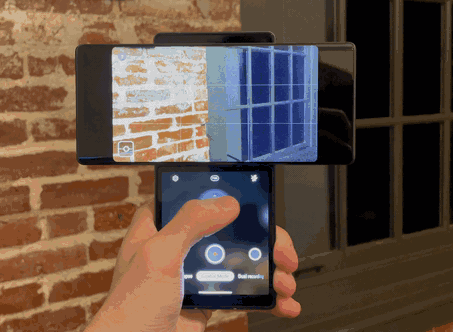
At first glance, the array of gimbal shooting modes are quite vexing, though they're relatively quick to grasp in practice. There are three modes — Pan Follow, First Person View, and Follow — that each behave differently in terms of orientation and object tracking.
I find the Wing's built-in gimbal exponentially easier to use than the Zhiyun motorized gimbal I've tried to use in the past — especially with Pan Follow mode, which keeps the subject in the frame for as long as possible by moving the lens irrespective of the phone, while also stamping out vertical juddering motions stemming from shaky hands.
Follow Mode fully compensates for all movements on both axes by swiveling the lens, so that the horizon always remains level, while First Person View allows the horizon to tilt, and essentially produces videos most similar to normal shooting. If this is difficult to understand in text — and I’m sure it is — fortunately there’s a handy graphic in the bottom-left corner of the screen that helps keep you aware of the camera’s orientation at all times.
When you turn to stills, though, the Wing struggles somewhat. Photos captured with the main camera tend to lack color and detail if lighting isn't ideal, while especially low-light shots exhibit lots of noise.
Compare these indoor shots of some books and trinkets on a shelf. The Wing delivers a generally noisier shot, with white balance that is slightly off, contributing to a green cast. It also fails to home in on finer details, like the texture of the white wall in the background. The Pixel 5 produced a comparatively blemish-free result.
You can see it here, in this shot of a fake plant, where both devices’ Portrait Modes are applied. The attempt from the Wing is far nosier and dimmer, with the solid wood surface and the plant’s green strands simply lacking necessary warmth. The bokeh also isn’t as pronounced as it is on Google’s phone, though in fairness, the Pixel 5 did erroneously apply some blur to the foreground, where it doesn’t belong.
The Wing allows you to combine night and ultrawide camera modes — something the iPhone 12 can also do, though overall I actually prefer the results from LG’s phone. There is a little too much noise, especially in the sky, but I’m impressed with how sharply the Wing renders the building’s brick exterior and the window panes. On the other hand, Apple’s software more accurately grasps the actual colors and overall tone of the scene.
Comparing the Wing’s selfie camera against the iPhone 12’s True Depth shooter, we see an overexposed result totally lacking necessary contrast. The color from my face and my orange beanie are drained; the sharpness of my hair and the texture in the cap’s fabric, blurred.
LG Wing review: Performance
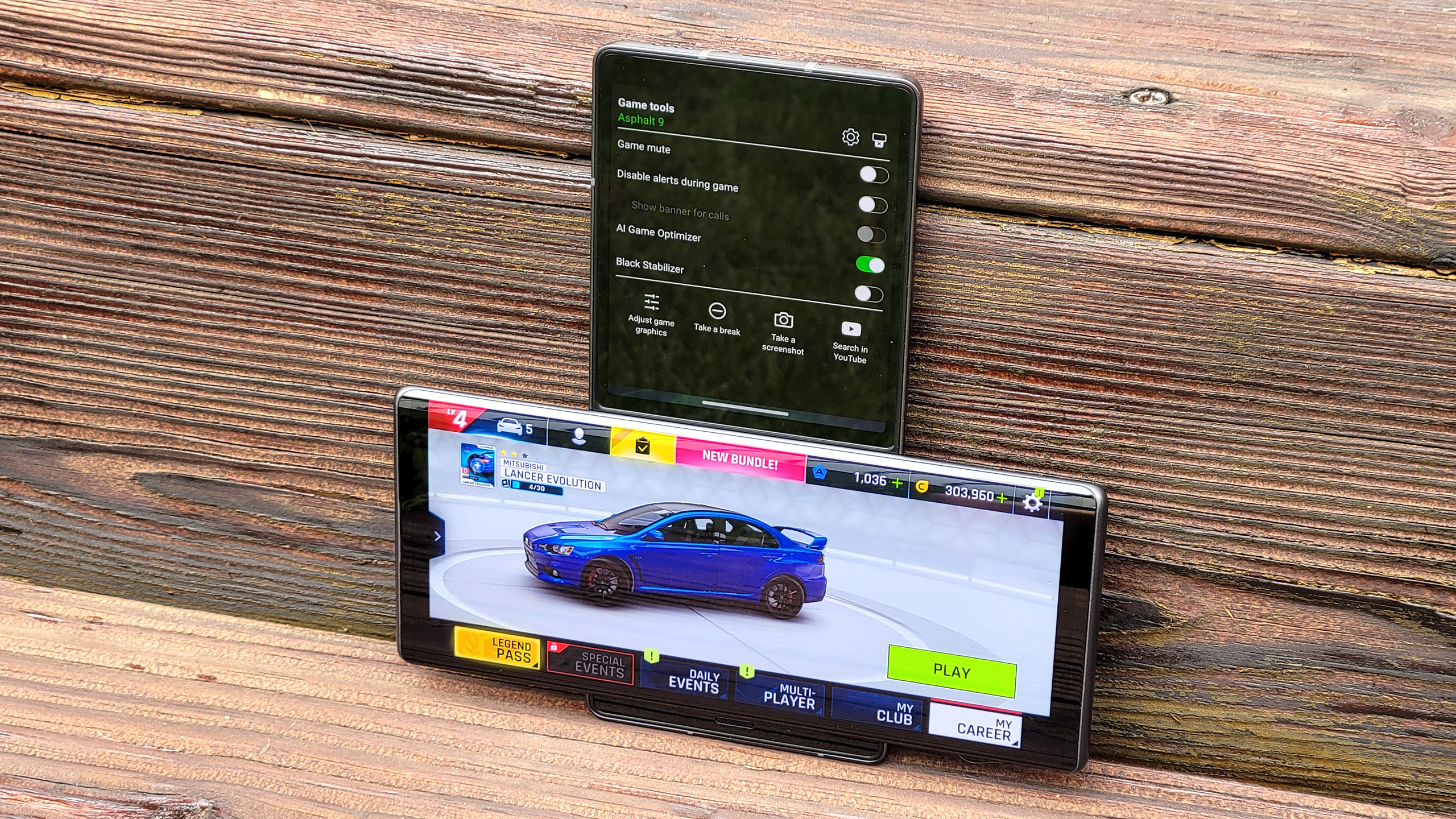
Like a growing number of 5G phones, the LG Wing is powered by a Snapdragon 765G system-on-chip. That's the same processor found inside the LG Velvet, as well as many other lower-cost 5G-ready models, like the OnePlus Nord and the Google Pixel 4a 5G. That silicon is paired with 8GB of RAM.
Performance is generally good, with the device acting satisfyingly quickly to switch between single-screen and dual-screen modes. Despite my slight reservations entering this review, the 765G is perfectly capable of supporting two apps at once and seems to be quite intuitive in terms of knowing what to do with them in the context of the phone's orientation and whether or not that second screen is in use.
However, this being a 7-series Snapdragon chip, graphical muscle is lacking somewhat. Asphalt 9 Legends plays at a frame rate well under 30 frames per second, at a lower-than-native resolution and with jaggies and low texture detail abound. It's not totally unresponsive and it's not any worse than other handsets that employ this chip — though it is inferior to other models that cost the same, which either pack Qualcomm's faster 865 silicon or Apple's A14 Bionic chipset, if you're entertaining the prospect of buying iPhone.
In the system-wide Geekbench 5 benchmark, the Wing delivered a multicore score of 1,891 points. For reference, the iPhone 12 Pro, which costs exactly the same as the Wing, hit 3,880, while Samsung's Galaxy Note 20 topped out at 3,182. Both start at $999, just like LG's device.
Turning to 3DMark's Wild Life graphics benchmark, there we saw a 1,643 score at 9.8 frames per second. Both the iPhone 12 Pro (6,567, 39 fps) and Galaxy Note 20 Ultra (4,164, 24.9 fps) handily surpassed the Wing here too.
In fact, you can get a device about as powerful as the Wing at or less than half the price, if you opt for the new $399 TCL 10 5G UW or $499 Google Pixel 4a 5G. Both of these handsets feature 765G processors and 5G connectivity, though they obviously lack second screens and gimbal cameras. This is all to say that if you're buying the Wing for its performance, you're doing so for the wrong reasons.
LG Wing review: Battery life and charging
Backing the LG Wing's two screens is a 4,000-mAh battery, which matches the size of the power pack in Verizon's version of the LG's other new phone, the Velvet.
As our testing of the AT&T version of the Velvet demonstrated, LG does have the capacity to produce devices that last a while on a charge. That phone in particular lasted 10 hours and 29 minutes in our custom web-surfing battery test, which is very good.
The Wing, on the other hand, has an extra display and the addition of millimeter-wave radios for 5G on Verizon's network, which bite into power. Thus, in the very same battery test using the Wing, we only saw an average of 8 hours and 11 minutes with just one screen lit; with both screens on, that dropped to an average of 7:03.
Thankfully, the Wing does at least charge quickly, hitting 57 percent from empty in 30 minutes with its included charger. It also supports wireless charging, which is very impressive, given everything this device has going on beneath the glass and metal.
LG Wing review: Verdict
The LG Wing may not be the sleekest or most powerful phone in the world, but it is certainly a unique one. It's a function-over-form device in the most brazen way, and it's downright cumbersome to hold at times.
Yet, the Wing really does encourage you to use it in ways you normally might not think to use your phone — a familiar trend among this year's most ambitious handsets, like the exciting-though-flawed Microsoft Surface Duo.
The Wing's problem is that it makes big sacrifices with regard to performance, image quality and longevity on a charge in its dual-screen aspirations. The extra display real estate does lend itself well to multitasking, but in exchange for that, you're paying $1,000 for a device only half as powerful as its adversaries, that captures steady video but dreary stills.
Even though I doubt the Wing will end up a booming critical or commercial success, it's refreshing to see a company of LG's stature in the industry experiment with ideas like this (or the LG Rollable that it showed off at CES 2021 with a promise of releasing later this year). The Wing is the first product borne out of the company's Explorer initiative, an in-house incubator to create mobile devices that reject the status quo of soulless slabs.
There's no denying LG has taken risks here; the trouble is, those risks haven't entirely panned out well.
Adam Ismail is a staff writer at Jalopnik and previously worked on Tom's Guide covering smartphones, car tech and gaming. His love for all things mobile began with the original Motorola Droid; since then he’s owned a variety of Android and iOS-powered handsets, refusing to stay loyal to one platform. His work has also appeared on Digital Trends and GTPlanet. When he’s not fiddling with the latest devices, he’s at an indie pop show, recording a podcast or playing Sega Dreamcast.
